Identifying California Spadefoots
California Frogs and Toads: |

Spadefoots resemble small toads with their rounded bodies and somewhat bumpy skin. You can tell them apart from true toads by their vertical, cat-like pupils, smoother skin, and lack of enlarged parotoid glands behind the eyes. They also have a hardened black digging spade on the back feet. (Some toads have a hardened growth on the back feet for digging, but it is usually not black.) Spadefoots are typically found in dry areas only during times of heavy rain when the ground is wet and temporary pools form. However, they may be out and about longer in agricultural areas where there is moisture from irrigation. There are three types of spadefoots in California which are similar in appearance, but, fortunately, they do not occur together in an area, so looking at the range maps will be the best way to identify them. Once you have determined that the California frog you want to identify is a spadefoot, you should be able to identify it easily by using the range maps, since no two species occur together or even near each other in the state. Click on the links below for more pictures and information about the three species of California Spadefoots. |
||
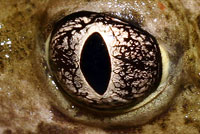 |
 |
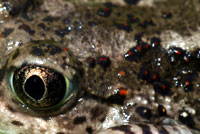 |
| Vertical Pupils | Black Spade on the Bottoms of the Hind Feet |
No enlarged parotoid glands behind the eyes. |
| Couch's Spadefoot - Scaphiopus couchii | ||
 |
 |
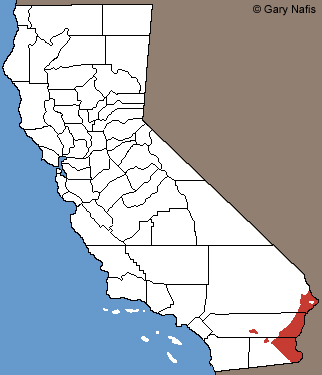 |
| (Male) |
(Female) | Range - in Red |
| Western Spadefoot - Spea hammondii | ||
 |
 |
 |
| Historical Range - in Red | ||
| Great Basin Spadefoot - Spea intermontana | ||
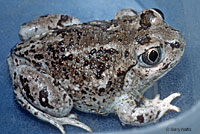 |
 |
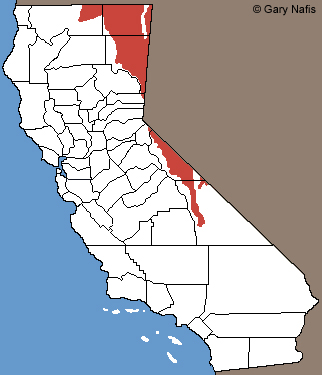 |
| Range - in Red | ||
Return to the Top
© 2000 -
